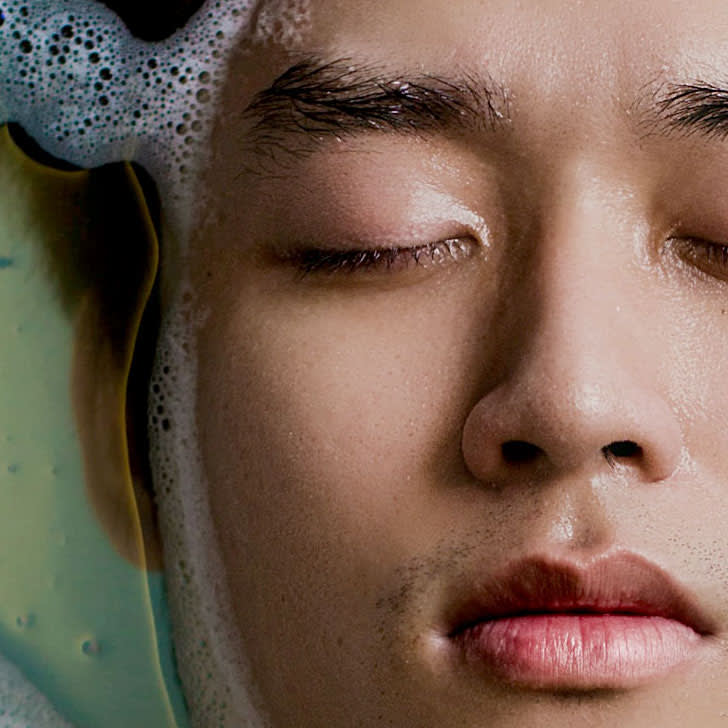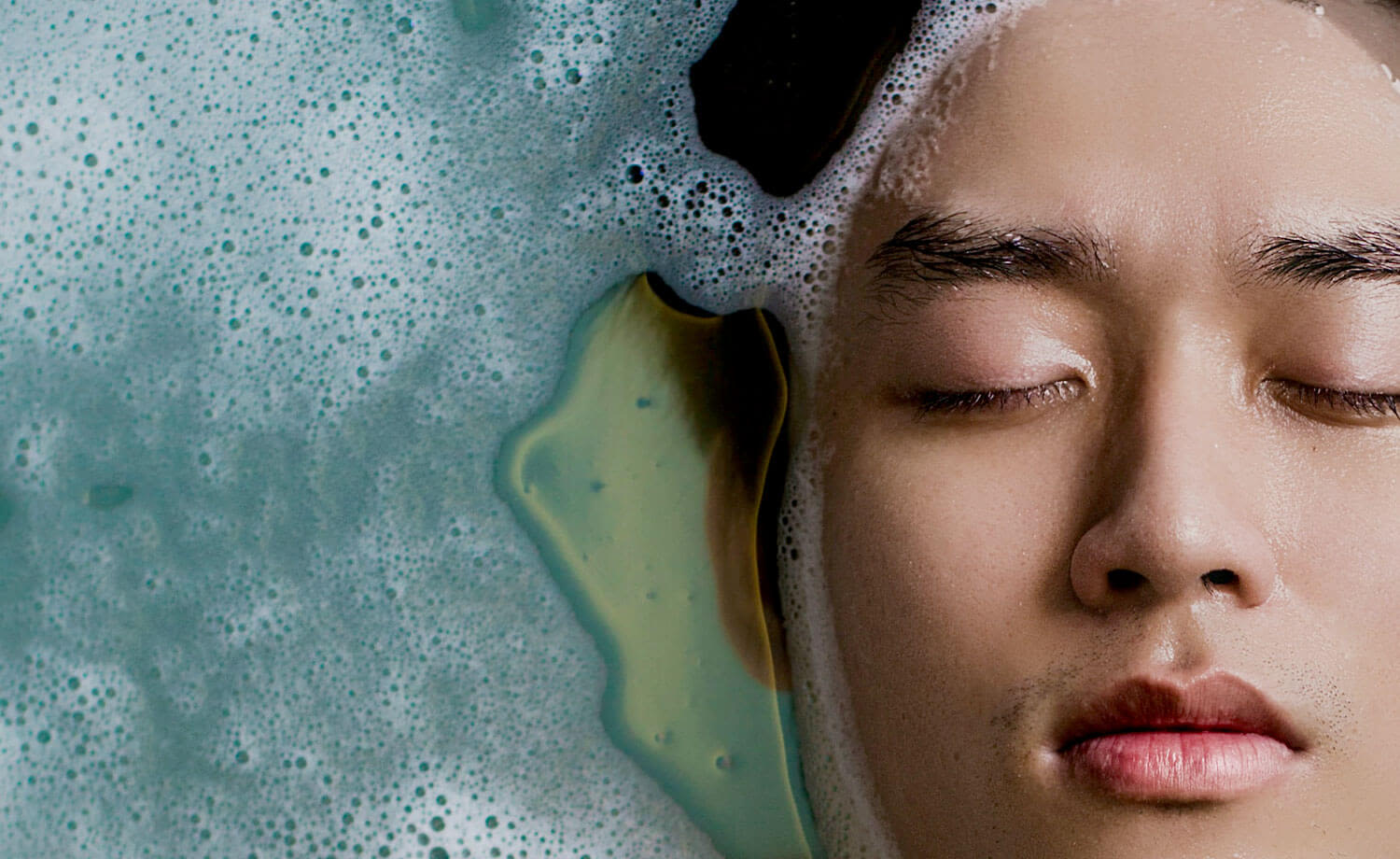Education
Do acne facials work?


SHARE
Education
Do acne facials work?
Medically reviewed by Kristin Hall, FNP
Written by Apostrophe Team
Last updated 10/1/2024
As far as skin conditions go, acne is one of the most common. Breakouts can be found on both the young and old, and can cause frustration and pain for those affected.
Like a really bad cold, breakouts range in severity from mild acne to moderate acne and even severe acne.
If you’ve dealt with acne in any appearance, you’ve probably tried everything from toothpaste to home remedies like green tea and apple cider vinegar.
But have you tried an acne facial to help with managing your acne-prone skin?
Acne facials are an alternate treatment to help with clearing the effects of acne on the skin. In addition, this method could possibly help prevent the appearance of this skin condition.
If you’re considering this treatment or are curious about how effective it is, we’ll be looking at that, as well as its possible side effects and how an acne facial is administered.
We’ll also be looking through alternate treatments that could help with managing acne.
What are Acne Facials?
The usual facial you’d get in a spa is probably something you’ve considered to help take your mind off a stressful week.
Other times, these treatments help manage some skin condition or another — acne facials aren’t very different.
However, unlike regular facials, which may sometimes be reproduced at home, acne facials are required to be carried out by a professional to produce the best results.
This is because acne facials often help cleanse the skin on a deep level to help get rid of acne-causing bacteria and other potential instigators.
To achieve this, professional estheticians or dermatology practitioners handle high-grade treatments that demand expert handling to prevent negative outcomes.
Extractions are also a common feature of acne facials, which should also only be carried out by skilled hands.
Types of Acne Facials
Depending on what type of acne you’re suffering from and what your skin needs (whether you have oily skin, sensitive skin, acne-prone skin, dry skin, etc.), dermatology practitioners have a number of options when it comes to acne facials. They include:
Classic Facial
This type of facial works best for mild to moderate forms of acne such as whiteheads and blackheads.
It looks to treat these acne breakouts safely and clear your pores, while also deep cleansing your skin.
Microdermabrasion
This treatment is a pretty powerful way of getting your skin in order.
Microdermabrasion is a chemical peel that strips the outer layers of your skin — much like treatments like salicylic acid and other exfoliants.
This may sound a tad scary, but this therapy is very effective in managing acne, as well as reducing the appearance of wrinkles, fine lines, and scarring on the skin.
To learn more about this procedure, check out our guide detailing the cost, effects, and possible side-effects of this microdermabrasion.
LED Facial
Lasers and light may seem like an unlikely pairing to help with managing acne, but that’s exactly what phototherapy aims to achieve.
This treatment uses light to penetrate the skin, which causes positive changes that help to improve its appearance.
Beyond acne, light therapy can also help improve wrinkles, acne scars, and even burn marks.
Our guide Light Therapy for Acne talks more about this treatment.
Decongesting Facial
Some dermatology practitioners may also offer a decongesting option to help clear clogged pores that may encourage the appearance of acne.
This treatment may also help take off the top layer of the skin to permit newer, fresher skin to appear.
Dermatology practitioners may also offer a brightening facial to help clear the damage acne breakouts may have done to your skin.
This treatment may be useful for managing the scarring and discoloration brought on by acne.
What to Expect From an Acne Facial
Before deciding on facials to keep your acne at bay, it’s helpful to have an idea of just what might happen when you decide to embark on this treatment.
Before the Treatment
One of the first things you’ll receive on your acne facial journey is a consultation with a certified esthetician or dermatology practitioner.
During the consultation, they’ll design a personalized treatment to follow to produce the best results.
They may also offer advice on what treatments you can carry out back at home.
During the Treatment
Another important thing to note about acne facials is that they probably won’t produce your desired result after only one appointment.
Typically, a series of sessions are required to achieve a considerable victory against the acne machine.
Generally, expect around six sessions before you start seeing improvements.
A typical session may last between 60 and 90 minutes — within that time, your esthetician may cleanse your skin with a fluid or facial/body wipe to remove excess oil and dirt from the skin.
Always assessing, the professional may examine your skin to determine what may be responsible for your acne.
The esthetician will then exfoliate your skin with a chemical like salicylic acid to help get rid of dead skin cells. This usually results in the appearance of younger, brighter skin.
Your skincare professional may then proceed to extract dirt and debris from your skin to help unclog your pores. This process can be harsh on your skin but ensuring you have an experienced professional will help mitigate these effects.
When this is completed, this treatment may be continued over a span of weeks, as directed by your skincare professional.
After the Facial
After each session, skincare products like serums, eye products, moisturizers, broad spectrum sunscreen, and lip balm may be applied to soothe the skin and provide sun protection.
Back home, you will be expected to continue an acne treatment program as recommended by your esthetician.
Benefits of Acne Facials
While it may feel relaxing to have your face fussed over for minutes on end, acne facials make for more than just a laidback way to spend your afternoons for a number of weeks.
The following benefits may be derived from this treatment:
Acne facials may be useful in unclogging pores. As mentioned, this process is critical to preventing the formation of acne comedones.
Treatments like microdermabrasion help in improving the appearance of acne. Their benefits also extend to correcting the uneven skin tone that may follow acne.
Acne facials that involve LED treatments may be used for managing mild to moderate forms of acne. This treatment may also prevent acne before it comes to the surface.
Other Treatments for Acne
If you’re not quite set to put your skin through an acne facial, there are alternate treatments to be tried to get your acne under control — even including prescription medication. They include:
Oral antibiotics
Topical antibiotics
Hormonal therapies
Isotretinoin (an oral retinoid)
Topical retinoids
Over-the-counter acne medications are also popularly suggested when it comes to getting acne under control.
For an acne treatment custom-crafted to care for your breakouts, Apostrophe topical treatments can come personalized to care for your skin, following a consultation with a dermatology practitioner.
For proper skin maintenance while managing acne, check out our guide to the best skincare routine for acne.
Final Thoughts on Acne Facials
Even though our bodies may sometimes betray us by letting breakouts happen, we do have a bit of an upper hand with multiple treatment methods to get this skin condition under control.
Acne facials may be a trusted option for getting your mild, moderate, or severe acne under control.
For the best results, going to a trusted skincare professional could spare you the pain of having to deal with acne and any accidents that may have occurred from attempting a DIY approach to this treatment.
References
Alanazi, M. S., Hammad, S. M., & Mohamed, A. E. (2018). Prevalence and psychological impact of Acne vulgaris among female secondary school students in Arar city, Saudi Arabia, in 2018. Electronic physician, 10(8), 7224–7229. Retrieved from: https://www.ncbi.nlm.nih.gov/pmc/articles/PMC6122864/#|
Harborbayclub.com (n.d) Acne facials. Retrieved from: https://harborbayclub.com/spa/facial-services/acne-facials/|
Eminenceorganics.com (2018, September 20) Retrieved from: https://eminenceorganics.com/ca/blog/2018/09/20/acne-facial-why-you-need-professional-treatment|
Shah M, Crane JS. Microdermabrasion. In: StatPearls [Internet]. Treasure Island (FL): StatPearls Publishing; 2021 Jan. Retrieved from: https://www.ncbi.nlm.nih.gov/books/NBK535383/|
Avci, P., Gupta, A., Sadasivam, M., Vecchio, D., Pam, Z., Pam, N., & Hamblin, M. R. (2013). Low-level laser (light) therapy (LLLT) in skin: stimulating, healing, restoring. Seminars in cutaneous medicine and surgery, 32(1), 41–52. Retrieved from: https://www.ncbi.nlm.nih.gov/pmc/articles/PMC4126803/|
Kraft, J., & Freiman, A. (2011). Management of acne. CMAJ : Canadian Medical Association journal = journal de l'Association medicale canadienne, 183(7), E430–E435. Retrieved from: https://www.ncbi.nlm.nih.gov/pmc/articles/PMC308056
Like what you just read? Sign up for our email list to get the scoop on skincare science delivered straight to your inbox.

Deep Dives
A dermatologist shares his thoughts on the recent studies about benzoyl peroxide and benzene.
Read More
Education
What is milia?
What is milia? Today, we’re jumping into one type of bump that you may have heard about most commonly in infants — milia.
Read More
Education
Best moisturizer for acne-prone skin
If you have combination acne-prone skin, figuring out which moisturizer is best for your skin might be tough. In this guide, we break down the best moisturizer for combination, acne-prone skin.
Read More

